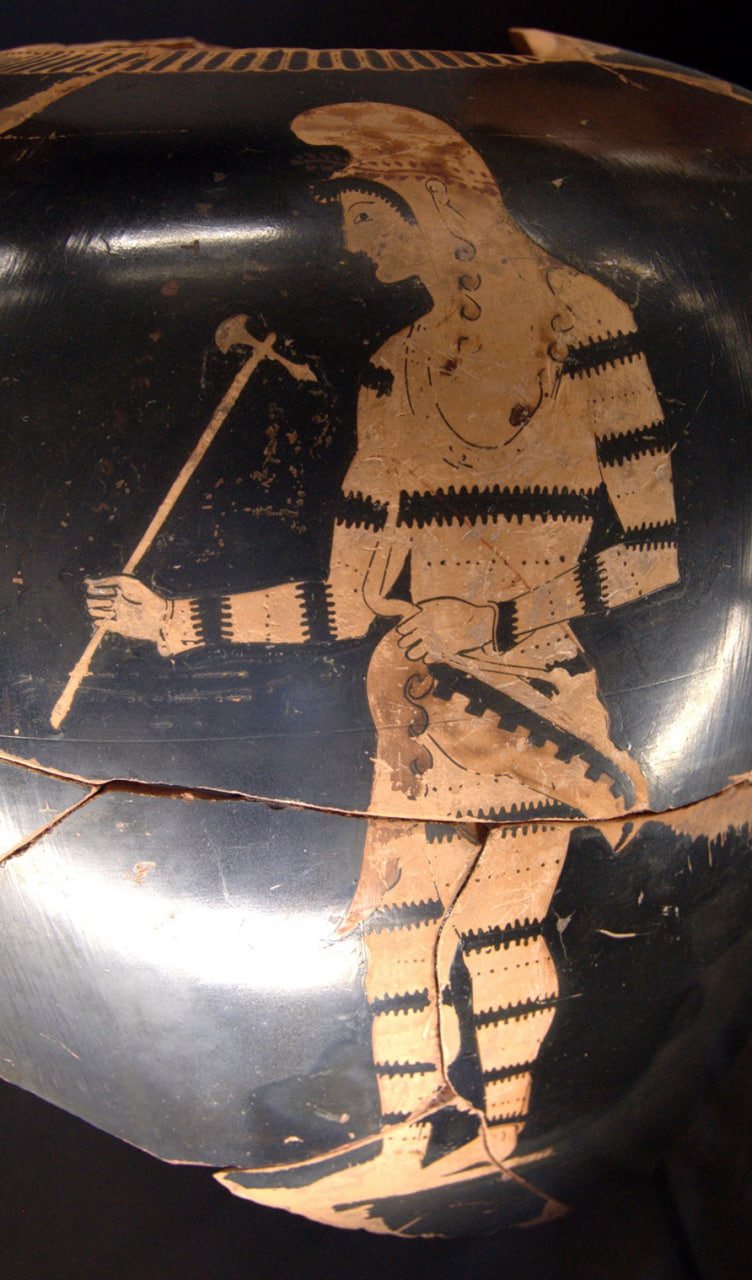
No products in the cart.
Battle axes have a fairly long history of use. Combat copies were used in the era of the first civilizations of the East. In ancient Egypt, warriors often used axes with an average blade length not exceeding 10 – 15 cm. Such specimens were made of bronze and copper. In later times, nomadic tribes of ancient Iranians, Scythians, Saka tribes and others used sagaris. This axe had a narrow blade on the middle shaft.
This indicates that it could be effectively used by steppe horsemen when approaching the enemy.A Scythian warrior with sagaris.
In general, axes were used in battles by various tribes of ancient Europe with a rather slow change in the shape of the blades and the length of the shaft. In the Early Middle Ages, which began with the fall of Rome in the 5th century, they were still used by foot and horse warriors of different states on a permanent basis.
Any weapon that existed in one era or another appeared because of the need to increase the effectiveness of its use in different conditions. For example, bronze copies of the ancient Egyptians were effective against a foot soldier without armor. Nubian warriors, with whom Ancient Egypt fought so often, did not have serious armor and, accordingly, a simple battle axe could put the enemy out of action with one blow if he did not have time to cover himself with a shield.
That is, because of the need for greater efficiency in the Middle Ages, a broadaxe appeared for successful use against shields and chain mail.
Broadaxe: the history of
appearance and appearance.
Broadaxe appeared in the Viking age, in the second half of the 10th century. It became widespread in the territory of modern Scandinavian countries. In the Viking arsenal, it is widely used and has a value at the level of a sword in its value. Also, this weapon is called Dane axe. As the raids and expansion of Scandinavian warriors, this cold weapon is becoming widespread in the British Isles and the Baltic States, then it is already widely adopted throughout Europe.
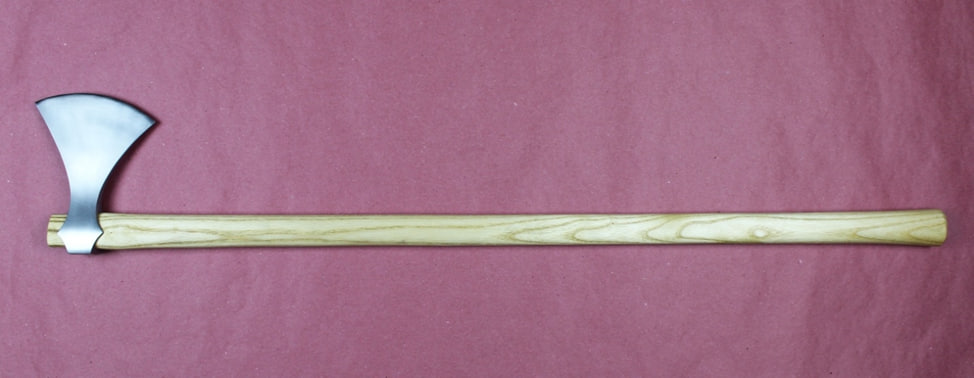
Broadaxe was used by the personal bodyguards of the rulers of housecarl. The English king Harold II Godwinson, who died during the Battle of Hastings in 1066, had a personal guard of housecarls, which was armed with brodaxes. There is also evidence indicating that Dane axe could have been used in the Byzantine Varangian Guard.
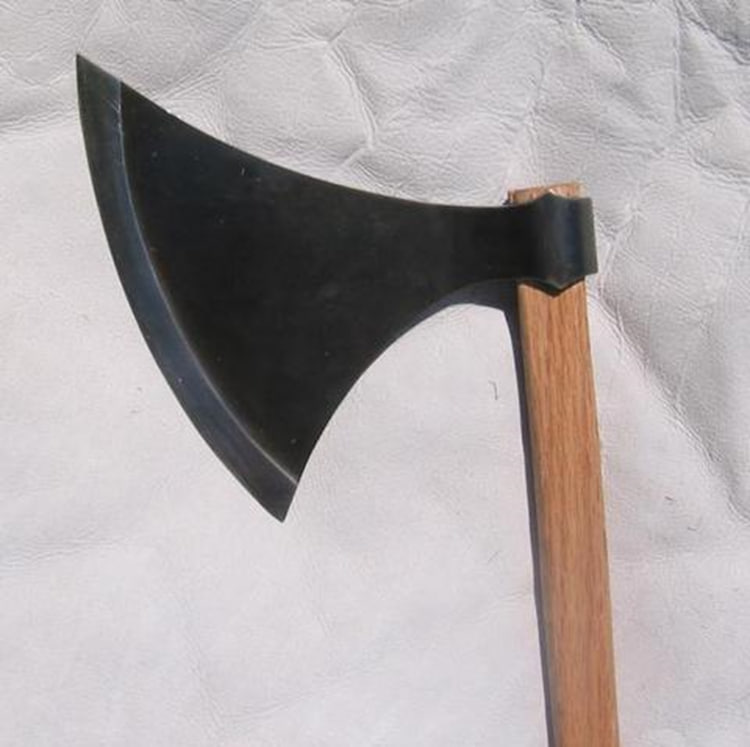
The combat broadaxe had a 25-30 cm blade with double-sided sharpening and a one-and-a-half-meter shaft was planted. There was also a carpenter's broadaxe, the main difference of which was one-sided sharpening. It was actively used for processing timber we can see this on the the Bayeux Tapestry, where in one of the episodes of the narrative of the Norman conquest, the work of the carpentry broadaxe is visible.
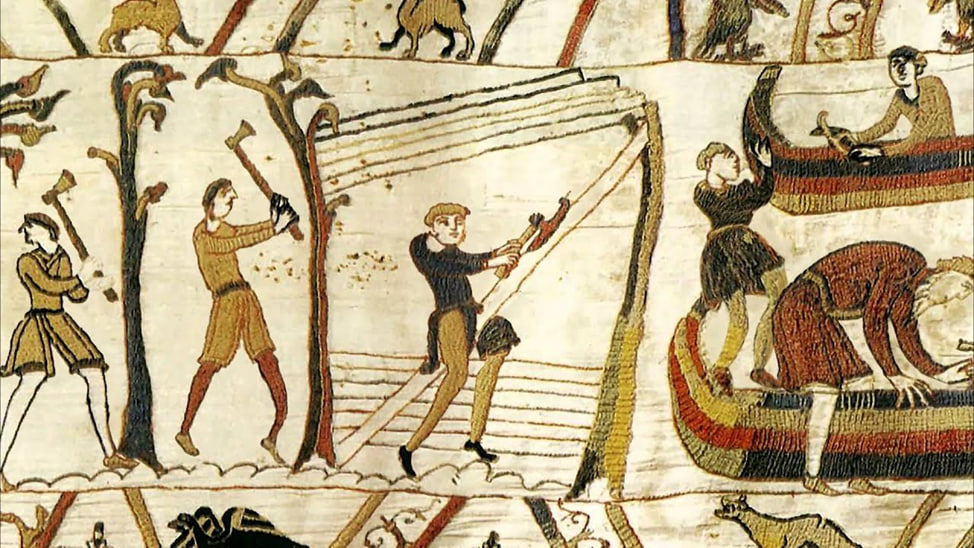
Dane axes
were made from local steel obtained by raw materials, with sufficient carbon
content. Moreover, it was easier to extract iron, or rather limonite, on the
territory of modern Scandinavian countries for processing into raw steel than
in the rest of Europe. This is due to the large number of small rivers with a
weak current, which allowed iron oxide to accumulate at the bottom, which
thereby formed limonite ore, which was processed with the help of a raw
furnace, reducing the amount of slag and enriched with carbon.

Limonite
But if we
turn to the research of the Scandinavian swords of the Wallace collection by
British scientists from the National Physical Laboratory in 2009, we can assume
that other cold steel could be made from crucible steel. The analysis of the
swords revealed that some of the samples were made of crucible steel, which was
known only in Asia (Iran, India and China in the first place). Steel of this
type, due to melting in a special pot, was distinguished by a greater
uniformity of the alloy and a lower content of impurities, unlike raw samples,
which increased strength. The Vikings were able to obtain such steel only
through developed trade links across the Volga and the Caspian Sea with the
territories of present-day Iran and Turkestan, where they traded crucible.
Probably, not only swords, but also axes could be made from crucible steel.
However, studies of Danish axes for the use of crucible steel by the Vikings
have not been conducted.
How Dane axe was used in
battles:
Broadaxe
was used exclusively for fighting on foot, which is due to the long shaft and
wide blade. With this weapon, it was possible to penetrate chain mail and most
helmets quite effectively. It was not a high-speed weapon for striking with two
hands on the lever. They used it in the shield wall. When applying a competent
blow, the first corner of the blade came into contact with the target, which
made it possible to break through the target. If a warrior failed to repel such
a blow with a shield, even for a warrior in chain mail, it would probably be
fatal. And even if it was possible to avoid open wounds, there will be internal
injuries of different types depending on the location of the hit, which would
lead to the inability to continue resistance.
If a warrior needed to deliver an exclusively cutting blow, it was necessary to strike with a pull on himself. The blow was similar in comparison to a saber strike. It could also be used to strike a horse's neck to counter cavalry. This is indicated by the Bayeux tapestry:
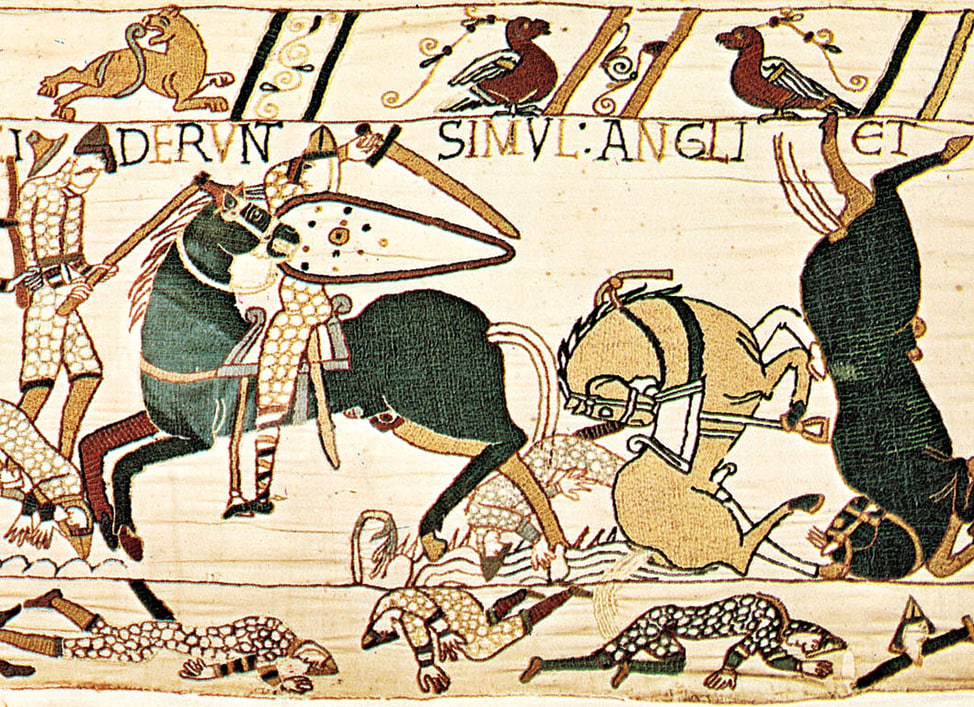
Broadaxe
was quite an effective weapon on foot, which is why it was used by knights
during dismounting until the 13th century, until more effective models like the
poleaxe appeared.
Further history of broadaxe:
An axe of
this type was used everywhere throughout Europe until the 12th - 13th
centuries. But in Ireland and Scotland it was used until the 16th century. The disuse
of this weapon is primarily associated with the emergence of hybrid types of
poleaxe and halberd weapons. Interestingly, it was broadaxe that became the
basis for the appearance of hybrid weapons that were used until the 18th
century.
